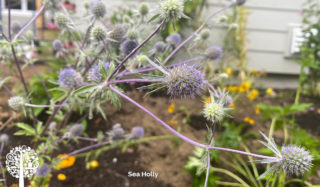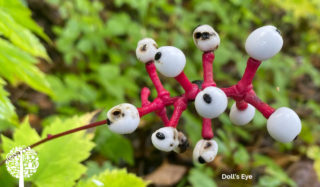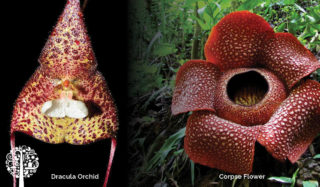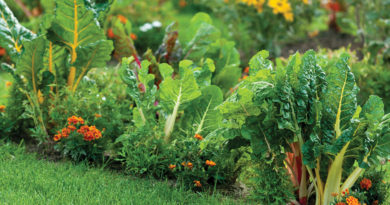Spooky Plants And Halloween Horror In The Garden
I love Halloween and everything about it, from tales of scary witches and eerie haunted houses to costumes and trick-or-treating with the kids. So, I thought it would be fun to extend the Halloween theme into the garden. Is there such a thing as spooky plants? You bet there is! Read on if you dare (insert evil laugh here).
Sea Holly
I’m not scared of sea holly; on the contrary, I’m very drawn to it and have it growing in my garden. But this majestic plant looks dressed up and ready to go to a Halloween party. There are wide varieties of sea holly (or Eryngium plants), but they generally have gorgeous silvery-purple or blue spikes on teasle blossoms. They grow from 18-36″ tall and tolerate various growing conditions. They’re excellent plants for low-maintenance cottage or coastal gardens because they’re okay with prolonged drought periods and don’t mind the wind, salt sprays, or sandy soils. Sea holly blooms from early summer to late fall, adding visual interest to the garden and attracting butterflies in droves.

Creepy Doll’s Eye
If you find dolls creepy, then White Baneberry will likely send chills down your spine. This plant is commonly referred to as Doll’s Eye because its white fruits feature a single black dot, making them look like tiny eyeballs hanging from blood-red stalks. If that’s not scary enough, the plant’s leaflets have sharp teeth. Yikes! I recently stumbled upon Doll’s Eye along our local bike path; you can generally find them growing wild in mature forests across North America. The leaves, roots, stems, flowers, and berries are extremely poisonous to humans, which ups the fear factor of this plant even further.
“Black Magic” Flower
How could something called ‘Old Black Magic Bearded Iris’ not make a list of spooky plants? Although the name fits in well with our Halloween theme, this garden plant is more intriguing than terrifying. The black flowers have a slight purple tinge and bloom abundantly from mid to late spring, making them a cool contrast to spring daffodils. Plant the bulbs in the fall and cover them with mulch to protect them throughout the winter. Old Black Magic Bearded Iris does well in zones 3-9 and tolerates acidic, sandy, loamy, and clay soil types. While not all that scary to humans, the flowers are deer-resistant, making them all the more appealing!

Dracula Orchids
Vampires are so dang creepy, am I right? Luckily, these Dracula orchids drink plain old water and not blood. Phew! This orchid didn’t get its name from Count Dracula but rather from the Latin draco, which means dragon. The plant species is mainly found in moist forests in Western Columbia and Ecuador, featuring interesting-looking flowers resembling dragon heads. The short leaves on either side of the flower are warty in texture and look like eyes beside a long and narrow nose. Not surprisingly, Dracula orchids love low-light growing conditions. They come in various colors and are very popular amongst hobby gardeners.
Corpse Flower
In my books, the corpse flower is legitimately super scary. This is the largest flowering plant in the world and can stand up to 102″ tall, which sounds nice (or monstrous), except that it smells like rotting flesh and death when in bloom. Nasty! Fortunately, the stench is short-lived; the corpse flower only blooms once every seven to nine years, and the flower only lasts 24-36 hours. The corpse flower is native to the rainforests of Western Sumatra, Indonesia; it’s listed as endangered by the International Union for Conservations of Nature, which is sad, even if it stinks.






